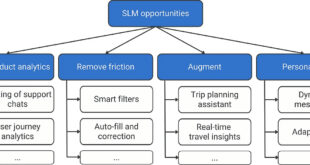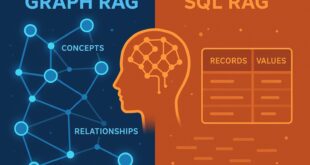[Submitted on 30 Oct 2025 (v1), last revised 5 Nov 2025 (this version, v2)] View a PDF of the paper titled Bridging the Gap between Empirical Welfare Maximization and Conditional Average Treatment Effect Estimation in Policy Learning, by Masahiro Kato View PDF HTML (experimental) Abstract:The goal of policy learning is to train a policy function that recommends a treatment given …
Read More »Fashion
[2509.25263] How Effective Are Time-Series Models for Precipitation Nowcasting? A Comprehensive Benchmark for GNSS-based Precipitation Nowcasting
[Submitted on 28 Sep 2025 (v1), last revised 4 Nov 2025 (this version, v3)] View a PDF of the paper titled How Effective Are Time-Series Models for Precipitation Nowcasting? A Comprehensive Benchmark for GNSS-based Precipitation Nowcasting, by Yifang Zhang and 9 other authors View PDF HTML (experimental) Abstract:Precipitation Nowcasting, which aims to predict precipitation within the next 0 to 6 …
Read More »It Doesn’t Need to Be a Chatbot
usually starts the same way. In a leadership meeting, someone says: “Let’s use AI!” Heads nod, enthusiasm builds, and before you know it, the room lands on the default conclusion: “Sure — we’ll build a chatbot.” That instinct is understandable. Large language models are powerful, ubiquitous, and fascinating. They promise intuitive access to universal knowledge and functionality. The team walks away and starts building. …
Read More »Sparsely Supervised Semantic Segmentation of Microscopy Data
[Submitted on 21 Oct 2025 (v1), last revised 30 Oct 2025 (this version, v2)] View a PDF of the paper titled {\epsilon}-Seg: Sparsely Supervised Semantic Segmentation of Microscopy Data, by Sheida Rahnamai Kordasiabi and 2 other authors View PDF HTML (experimental) Abstract:Semantic segmentation of electron microscopy (EM) images of biological samples remains a challenge in the life sciences. EM data …
Read More »Rising energy prices put AI and data centers in the crosshairs
As tech companies tout their plans for massive new data centers, consumers are increasingly worried the AI-driven gold rush will ultimately drive up the price they pay for electricity, according to a new survey. The report, commissioned by solar installer Sunrun, found that 80% of consumers are worried about the impact of data centers on their utility bills. Consumers’ concerns …
Read More »Graph RAG vs SQL RAG
I in both a graph database and a SQL database, then used various large language models (LLMs) to answer questions about the data through a retrieval-augmented generation (RAG) approach. By using the same dataset and questions across both systems, I evaluated which database paradigm delivers more accurate and insightful results. Retrieval-Augmented Generation (RAG) is an AI framework that enhances large …
Read More »Dynamic Speculative Decoding with KLD Stability for Real-World Serving
[Submitted on 1 Sep 2025 (v1), last revised 30 Oct 2025 (this version, v3)] View a PDF of the paper titled DSDE: Dynamic Speculative Decoding with KLD Stability for Real-World Serving, by Mingyu Yang and 4 other authors View PDF HTML (experimental) Abstract:Speculative decoding accelerates large language model inference, but its reliance on a fixed speculation length is suboptimal in …
Read More »Neural Stochastic Flows: Solver-Free Modelling and Inference for SDE Solutions
arXiv:2510.25769v1 Announce Type: cross Abstract: Stochastic differential equations (SDEs) are well suited to modelling noisy and irregularly sampled time series found in finance, physics, and machine learning. Traditional approaches require costly numerical solvers to sample between arbitrary time points. We introduce Neural Stochastic Flows (NSFs) and their latent variants, which directly learn (latent) SDE transition laws using conditional normalising flows …
Read More »[2510.13397] Assessing the robustness of heterogeneous treatment effects in survival analysis under informative censoring
[Submitted on 15 Oct 2025 (v1), last revised 28 Oct 2025 (this version, v2)] View a PDF of the paper titled Assessing the robustness of heterogeneous treatment effects in survival analysis under informative censoring, by Yuxin Wang and 4 other authors View PDF Abstract:Dropout is common in clinical studies, with up to half of patients leaving early due to side …
Read More »Exploring LLM Limits in Fine-Grained Scientific Hypothesis Discovery via Hierarchical Search
[Submitted on 25 May 2025 (v1), last revised 27 Oct 2025 (this version, v2)] View a PDF of the paper titled MOOSE-Chem2: Exploring LLM Limits in Fine-Grained Scientific Hypothesis Discovery via Hierarchical Search, by Zonglin Yang and 9 other authors View PDF HTML (experimental) Abstract:Large language models (LLMs) have shown promise in automating scientific hypothesis generation, yet existing approaches primarily …
Read More » Deep Insight Think Deeper. See Clearer
Deep Insight Think Deeper. See Clearer




